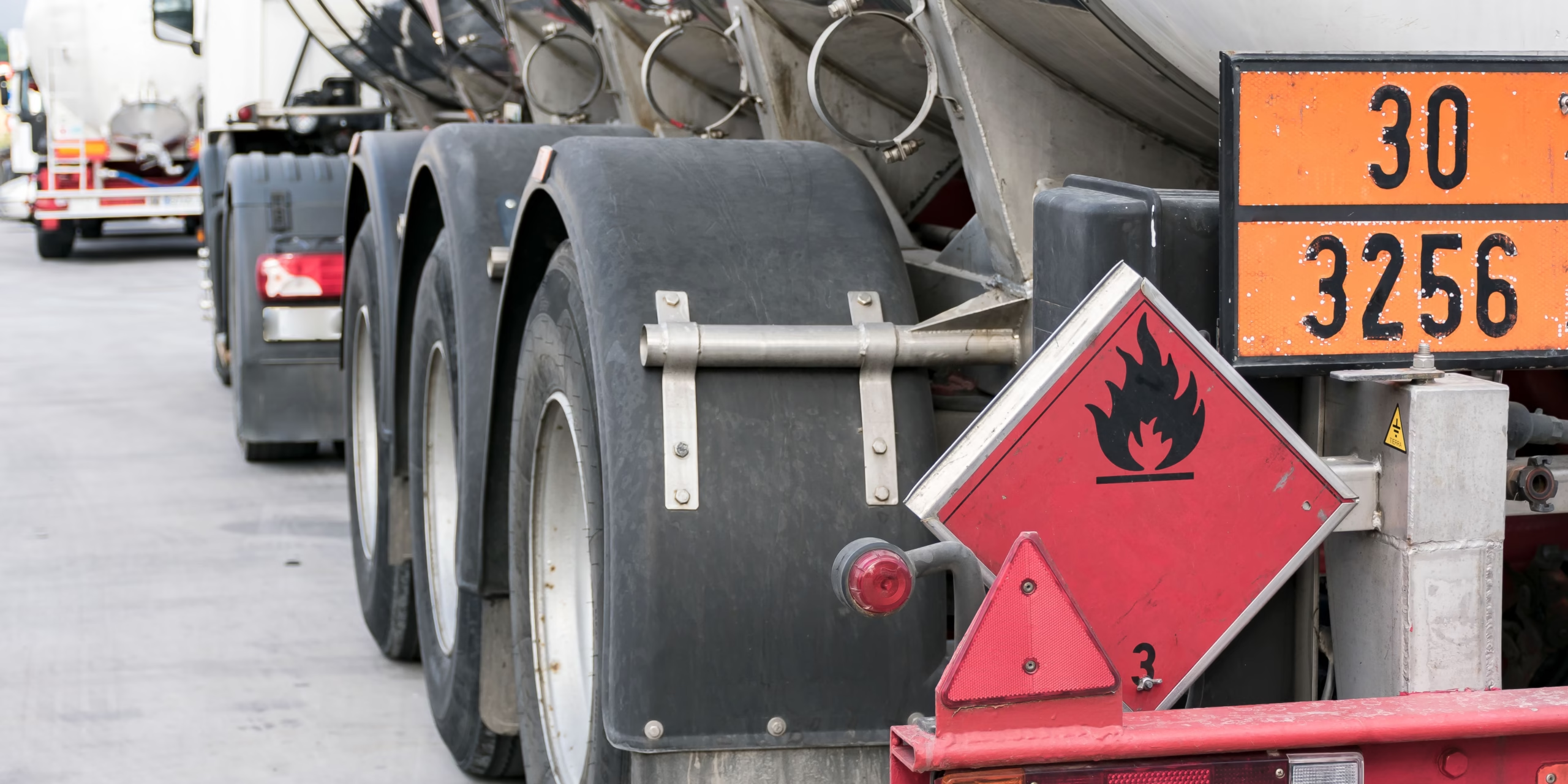Transporting dangerous goods across the UK comes with significant risks and strict regulatory requirements. Among the most crucial considerations for hauliers and logistics companies is obtaining proper insurance coverage.
Whether you operate a dedicated ADR fleet or occasionally transport dangerous goods, understanding the costs associated with hazardous goods transport insurance is essential for your business’s financial planning and compliance with UK and international regulations.
Hazardous Goods Insurance premium costs range from £3,000 to £50,000+ per vehicle annually. Whilst this may initially seem steep in reflection to other commercial insurances, it is a fair cost in reflection of the potentially catastrophic financial losses which could occur from accidents involving dangerous goods.
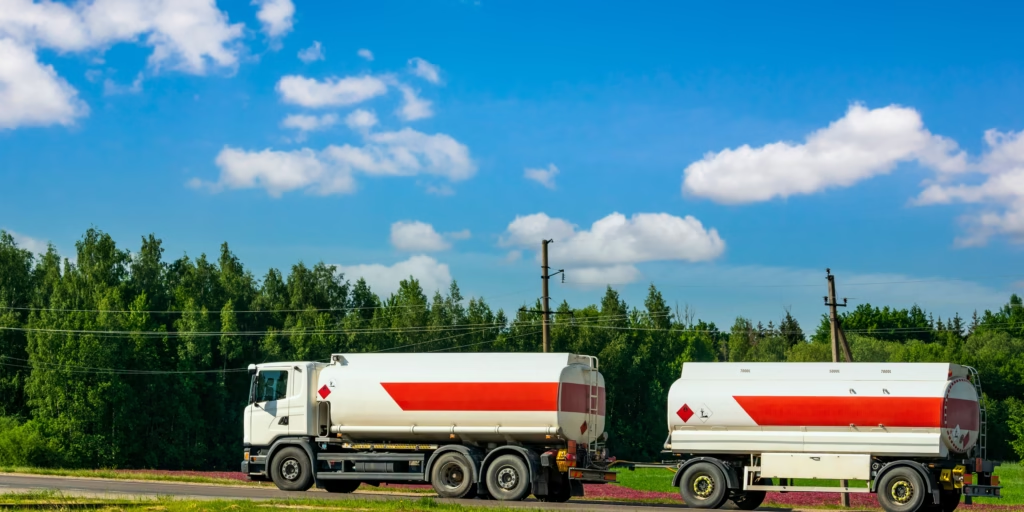
Understanding Hazardous Goods Transport Insurance in the UK
Hazardous goods transport insurance is specialised cover designed specifically for businesses that transport materials classified as dangerous under ADR regulations (European Agreement concerning the International Carriage of Dangerous Goods by Road). This insurance goes beyond standard goods in transit or commercial motor policies to address the unique risks associated with dangerous goods.
Unlike general haulage insurance, hazardous goods cover explicitly addresses potential environmental damage, clean up costs, and the heightened liability risks that come with transporting dangerous substances. This specialised insurance is not just good business practice, it’s a legal requirement under UK law.
The UK’s Health and Safety Executive (HSE) and Department for Transport require carriers transporting hazardous materials to maintain suitable insurance levels, with minimum requirements ranging from £5 million to £10 million depending on the specific materials transported. These requirements exist because accidents involving hazardous materials can result in damages far exceeding those of standard cargo incidents.
A comprehensive hazardous goods transport insurance policy in the UK typically includes:
- Public liability and property damage coverage
- Environmental impairment liability
- Clean-up and remediation costs
- Legal defence costs
- Business interruption coverage
- Specialised goods in transit coverage for the hazardous materials themselves
Various stakeholders in the dangerous goods transportation chain, including consignors, carriers, and consignees may need different types of cover based on their specific roles and responsibilities under UK regulations.
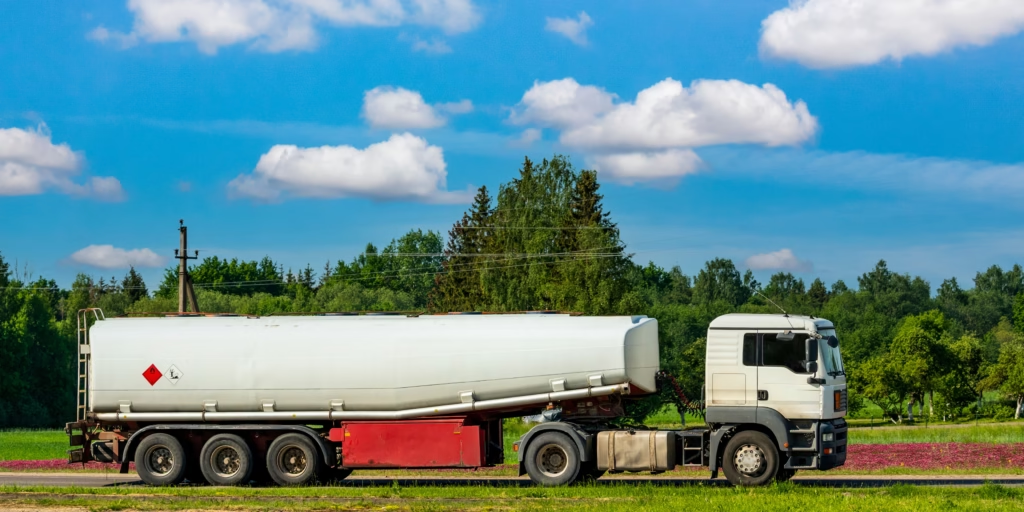
Average Cost of Hazardous Goods Transport Insurance in the UK
The cost of hazardous goods transport insurance varies widely based on numerous factors, but understanding general price ranges can help with initial budgeting.
For small operations with limited dangerous goods transportation, annual premiums typically start around £3,000 to £7,000 per vehicle. Mid-sized operations often see costs ranging from £7,000 to £20,000 annually per vehicle, while large-scale hazardous goods transporters may pay £15,000 to £50,000 or more per vehicle annually.
These costs can vary significantly based on the ADR classification being transported:
| ADR Class | Description | Relative Insurance Cost |
|---|---|---|
| Class 1 | Explosives | Very High |
| Class 2 | Gases | High to Very High |
| Class 3 | Flammable Liquids | High |
| Class 4 | Flammable Solids | Moderate to High |
| Class 5 | Oxidising Substances | Moderate to High |
| Class 6 | Toxic Substances | High |
| Class 7 | Radioactive Materials | Very High |
| Class 8 | Corrosive Substances | Moderate to High |
| Class 9 | Miscellaneous Dangerous Goods | Moderate |
Regional variations across the UK also impact insurance costs. Operations in densely populated areas like Greater London or environmentally sensitive areas typically face higher premiums than those in rural areas. Similarly, international dangerous goods transport involving cross Channel or European routes often requires additional coverage and consequently higher insurance costs.
Insurance pricing continues a trend of steady increases seen in recent years, with average premium increases of 7-12% annually across the UK dangerous goods transportation sector. These increases reflect both inflation, the hardening insurance market following Brexit adjustments, and the growing recognition of environmental liability risks.
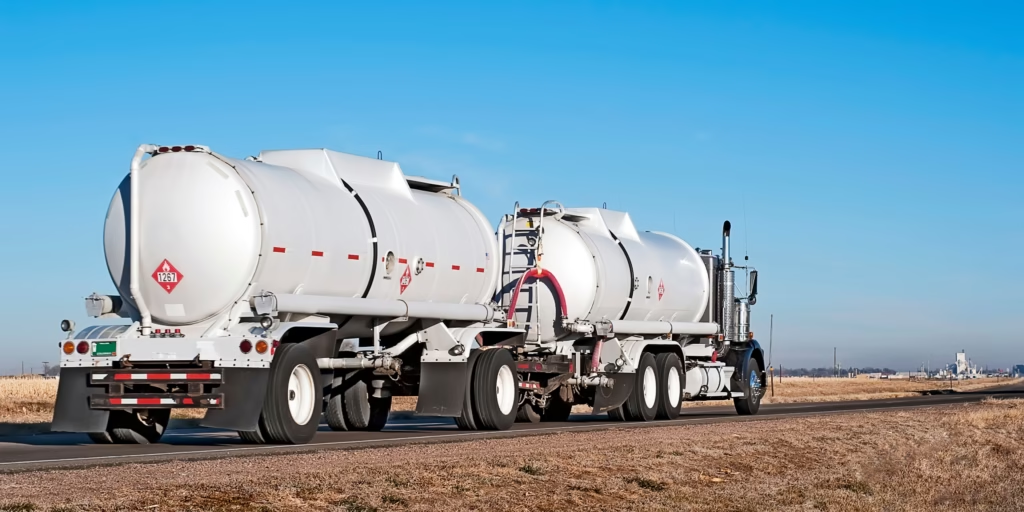
Factors Affecting Insurance Premium Costs for UK Operators
Understanding what influences your hazardous goods transport insurance costs can help you identify potential areas for savings. Here are the primary factors UK insurers consider when calculating premiums:
Types of Dangerous Goods
The specific ADR classes you transport dramatically impact your insurance costs. Highly explosive, flammable, or toxic materials (Classes 1, 2, and 6) typically command the highest premiums due to their potential for catastrophic damage. Radioactive materials (Class 7) often require specialised coverage that comes at premium prices.
Safety Record and Claims History
Perhaps no factor influences your insurance costs more than your safety record. Companies with clean histories of zero or minimal incidents typically enjoy significantly lower premiums, often 30-50% less than those with multiple claims. Most UK insurers review at least three years of claims history, with some examining up to five years of data.
Fleet Characteristics
The age, type, and maintenance records of your vehicles play crucial roles in determining insurance costs. Newer vehicles equipped with modern safety features typically qualify for lower premiums. Specialised tankers and pressure vessels designed specifically for dangerous goods transport may require higher coverage limits but can reduce overall risk profiles.
Driver Qualifications
Drivers with proper ADR training certificates, clean driving records, and extensive experience typically help reduce insurance costs. Many insurers offer discounts for companies that implement rigorous driver selection processes and ongoing training programmes beyond the mandatory five year ADR refresher training.
Routes and Operating Areas
Transportation routes through high traffic urban centres or environmentally sensitive areas typically result in higher insurance premiums. Similarly, longer hauls present greater risk exposure than shorter routes. UK insurers particularly scrutinise routes that include motorway networks with high traffic volumes, tunnels with dangerous goods restrictions, and coastal routes.
Business Size and Revenue
Your overall business scale impacts insurance costs in multiple ways. Higher revenue operations typically require higher coverage limits. However, larger companies may also benefit from economies of scale when purchasing insurance, potentially securing better rates on a per-vehicle basis than smaller operators.
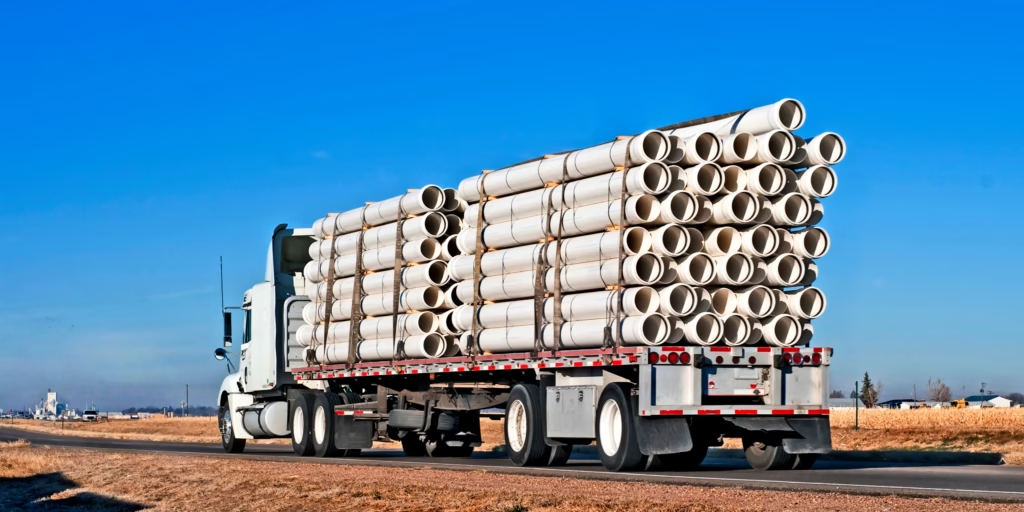
Insurance Coverage Options and Their Cost Implications for UK Businesses
Selecting the right coverage types and limits directly impacts both your protection level and premium costs. Here’s a breakdown of common coverage options and their financial implications for UK operators:
General Liability vs. Specialised Coverage
While general commercial motor and goods in transit policies might cost 30-50% less than specialised dangerous goods coverage, they typically exclude many of the specific risks associated with hazardous materials transport. This coverage gap can leave transporters exposed to potentially bankrupting liabilities.
Specialised hazardous goods transport insurance typically includes:
- Goods in transit liability (specifically for dangerous goods)
- Environmental liability
- Pollution liability
- Specialised business interruption coverage
Environmental Liability Insurance
This crucial coverage specifically addresses clean up costs, remediation, and third-party damages resulting from pollution events. For UK dangerous goods transporters, this coverage typically adds 15-25% to base premium costs but provides protection against some of the most financially devastating potential claims, particularly important given the UK’s strict environmental regulations.
Coverage Limits Considerations
Minimum required coverage (often £5 million for many dangerous goods) is significantly less expensive than comprehensive coverage with higher limits. However, considering that the average hazmat clean-up costs in the UK range from £75,000 to over £750,000, with potential liabilities reaching tens of millions in severe cases, higher coverage limits often represent prudent financial protection despite their higher upfront costs.
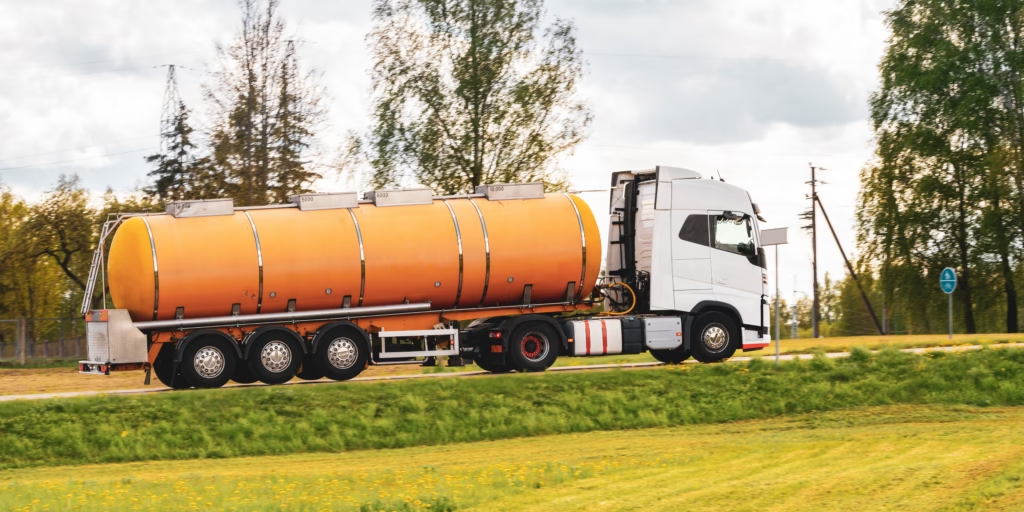
How to Reduce Hazardous Goods Transport Insurance Costs in the UK
While hazardous goods transport insurance represents a significant operating expense, several strategies can help UK operators reduce premiums without compromising necessary protection:
Implement Robust Safety Management Systems
Documented safety protocols, regular safety meetings, and comprehensive emergency response plans can qualify transporters for significant premium discounts, often 10-15% or more. These systems demonstrate to insurers that you’re actively working to minimise risks. Consider adopting ISO certification (such as ISO 9001 or ISO 14001) which is particularly valued by UK insurers.
Invest in Driver Training Beyond ADR Requirements
Beyond the mandatory ADR certification, additional training in defensive driving, emergency response, and material specific handling can reduce premiums by demonstrating enhanced driver competence. Many UK insurers offer specific discounts for advanced driver certification programmes such as those offered by JAUPT-approved centres.
Leverage Technology
Modern fleet management systems, tachographs, and real time tracking can reduce insurance costs by providing data that demonstrates safe operations. Dash cameras, in particular, can reduce premiums by 5-10% with many UK insurers by providing clear evidence in accident situations.
Strategic Excess Selection
Opting for higher voluntary excess can significantly reduce premium costs, sometimes by 15-20% or more. However, this approach requires maintaining adequate cash reserves to cover those higher excesses should an incident occur.
Purchasing Multiple Insurance Policies
Working with a single insurer for multiple coverage types (motor insurance, public liability, environmental coverage, etc.) often results in discounts of 5-15% compared to purchasing these policies separately.
Specialised Broker Partnerships
Working with insurance brokers who specialise in dangerous goods transportation often leads to better coverage at lower costs. These specialised brokers understand available markets in the UK insurance landscape, coverage nuances, and potential discounts that general insurance agents might miss.

Insurance Provider Selection Process for UK Dangerous Goods Transporters
Choosing the right insurance provider is just as important as selecting appropriate coverage types and limits. The ideal hazardous goods transport insurance provider in the UK offers:
- Specialised dangerous goods experience: Look for insurers with dedicated dangerous goods transportation divisions and underwriters who understand the specific risks of your operation and UK ADR regulations.
- Claims handling expertise: In the event of a dangerous goods incident, you need an insurer with specialised claims adjusters who understand environmental remediation, UK regulatory requirements, and proper response protocols.
- Financial stability: Major incidents involving hazardous materials can result in claims that take years to resolve. Choose insurers with strong financial ratings from agencies like Standard & Poor’s or A.M. Best to ensure they’ll remain solvent throughout potentially lengthy claims processes.
When evaluating potential insurers, ask these critical questions:
- What percentage of their portfolio consists of dangerous goods transporters in the UK?
- What specific experience do they have with your particular ADR classes?
- How do they handle emergency response in the immediate aftermath of an incident?
- What risk management resources do they provide to policyholders?
- Can they provide references from similar UK-based dangerous goods transportation companies?
The insurance acquisition process typically takes 3-6 weeks from initial consultation to policy binding. This timeline allows for thorough risk assessment, operations evaluation, and proper coverage customisation.

Real-World Cost Examples and Case Studies for UK Businesses
Understanding how insurance costs apply to different business scenarios can help contextualise expenses for your specific situation:
Small Business Example: Regional Waste Oil Transporter
A small waste oil transportation company operating 5 vehicles primarily within a single UK region might expect:
- Base premium: £4,000-£8,000 per vehicle annually
- Total annual insurance cost: £20,000-£40,000
- Primary cost factors: Class 3 flammable liquids, regional only operation, smaller vehicle fleet
Medium Business Example: Chemical Transportation Company
A mid-sized chemical transporter with 20 vehicles operating across the UK might expect:
- Base premium: £9,000-£18,000 per vehicle annually
- Total annual insurance cost: £180,000-£360,000
- Primary cost factors: Multiple ADR classes including corrosives and toxic substances, nationwide operations, varied customer base
Large Business Example: National Dangerous Goods Logistics Provider
A large-scale dangerous goods transportation company with 50+ vehicles operating nationwide and into Europe might expect:
- Base premium: £12,000-£25,000 per vehicle annually (reflecting volume discounts)
- Total annual insurance cost: £600,000-£1,250,000+
- Primary cost factors: All ADR classes, international operations, complex logistics, higher liability limits
While these premiums represent significant operating expenses, they should be viewed in context of potential uninsured losses. The average dangerous goods incident resulting in material release costs between £100,000 and £350,000 in clean up and liability expenses in the UK, with severe incidents potentially reaching millions or tens of millions in damages.
Conclusion
Hazardous goods transport insurance represents a significant but necessary operating expense for UK companies transporting dangerous materials. While premium costs ranging from £3,000 to £50,000+ per vehicle annually may seem steep, they provide essential protection against potentially catastrophic financial losses resulting from accidents involving dangerous goods.
By understanding the factors that influence insurance costs from ADR classifications to safety records and fleet characteristics, UK transporters can make informed decisions about coverage options while identifying potential areas for premium reduction through improved safety practices and strategic policy structuring.
For most dangerous goods transporters in the UK, working with specialised insurance brokers who understand both the transportation industry and the unique risks of hazardous materials provides the best pathway to appropriate coverage at competitive rates. These partnerships allow companies to secure necessary protection while managing insurance costs as effectively as possible.
🔑 Key Takeaway: Remember that while reducing insurance costs is a legitimate business goal, maintaining adequate cover limits and appropriate policy provisions should remain the primary focus. In the high stakes world of dangerous goods transportation, proper insurance doesn’t just protect your business, it’s an essential component of responsible operation under UK regulations.
Ready to optimise your dangerous goods transport insurance? Start by conducting a comprehensive review of your current coverage, implementing strategic safety improvements, and consulting with specialised dangerous goods insurance brokers who understand your specific operational needs in the UK market.
This guide is intended for informational purposes only and does not constitute legal or insurance advice. Always consult with your insurance provider or legal professional for specific guidance regarding your policy.
Need to Speak?
If you can’t find the answer to your question and need to discuss with an agent who can help answer and possibly look to place you with the relevant insurer to suit your business needs, click below for an immediate call back

